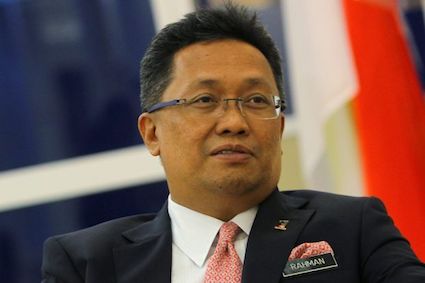Would Tun Daim and Tun Mahathir publicly call for the ECRL to be owned and controlled by a foreign company?

I am confident that Tun Daim Zainuddin being an experienced former Finance Minister under Tun Mahathir Mohamad’s government would understand why the present government preferred that the East Coast Rail Line (ECRL) project is structured as a domestic investment with foreign funding.
The government had made it clear with our numerous answers in Parliament and statements on the ECRL that the project is a domestic investment funded with a soft loan from China with very favourable rates that is lower than the government’s cost of funds.
Learning from our mistakes of the past where the government of Tun Mahathir and Tun Daim had borrowed extensively from Japan but ended up having to pay more than double when the Yen appreciated sharply against the Ringgit, the present government made sure that the soft loan from China has built-in mechanisms to mitigate exchange rate risks.
Whether structured as a direct foreign investment or a domestic investment with a foreign loan, the objectives of the ECRL project to generate economic activity, create jobs and deliver a critical transportation link between the east coast and west coast of peninsular to bridge the economic divide, will still be achieved.
However, the crucial difference is that if the ECRL was a foreign direct investment then a foreign party would own and operate the rail link.
As this rail-line will cross peninsular Malaysia, the government has decided that the ownership and the operation of this line must remain in Malaysian hands due to national security and strategic economic reasons.
Therefore, the ECRL is owned and operated by a 100%-owned subsidiary of the Ministry of Finance which will then repay the foreign soft-loan when the line starts operations.
Had this project been a direct foreign investment instead, the foreign owner of the project would repatriate profits back to their country.
Funding domestic investment in local infrastructure projects using foreign funding is not a new concept in Malaysia.
During Tun Mahathir and Tun Daim’s government, projects such as the KLIA, the Kenyir Hydroelectric Power Plant Project, the Port Dickson (Tuanku Jaafar) Power Station and various others were funded by soft loans from Japan.
Closer to the present, the second Penang bridge was also funded by a soft-loan from China.
However, if Tun Daim or Tun Mahathir has issues with the ECRL project being a domestic investment with funding from soft loan instead of a direct foreign investment, I suggest that they issue official statement calling for the government to sell the strategic ECRL infrastructure and place it entirely under ownership and control of the foreign ownership. Would Tun Daim and Parti Pribumi Bersatu Malaysia be happier if foreigners own and operate the ECRL instead? Of it was direct investment by China, would they still criticise the project and call it economic invasion by tChina just like they did to other China’s investments in Malaysia?
Let me reiterate once again that the Prime Minister envisions ECRL project as a long overdue economic game-changer that will provide a land bridge that connects the east coast and west coast ports and provide safe and efficient rail transport to millions. This project will significantly boost the economic future of our east coast states.
This crucial project should have had been done during Tun Mahathir’s era when the consultants appointed at that time showed much lower cost. Unfortunately Tun Mahathir preferred to build other mega projects rather than decide to build the rail network which would have given the people of the east coast an economic boost. If the current government delays the project further like what Tun Mahathir did, the cost will be much higher in the future.
Now that the ECRL project is finally taking off, it should not be derailed or worst, politicised. The people of Kelantan, Terengganu and Pahang deserve better treatment and opportunities.
Abdul Rahman Dahlan,
Minister
Prime Minister’s Department
Economic Planning Unit
Putrajaya.

